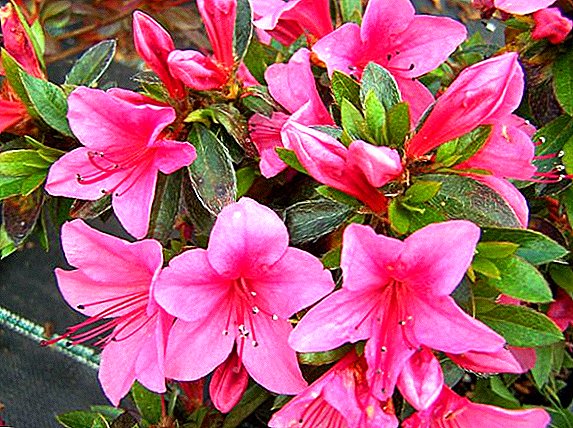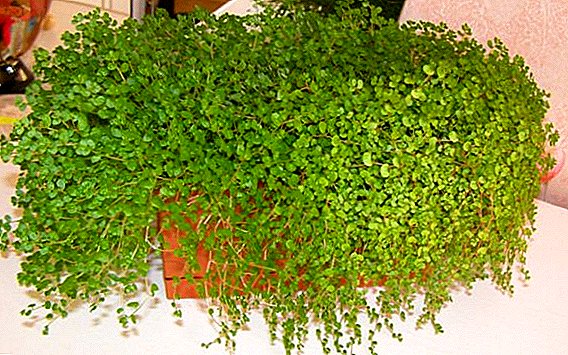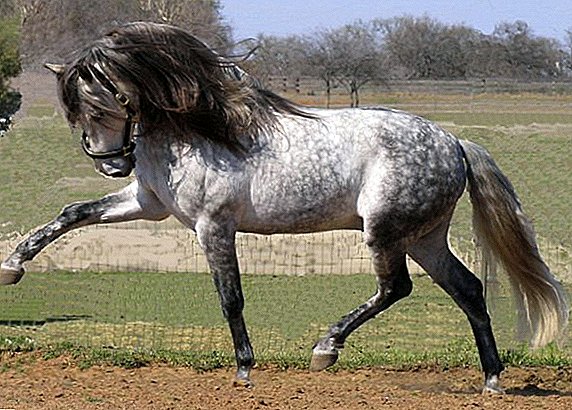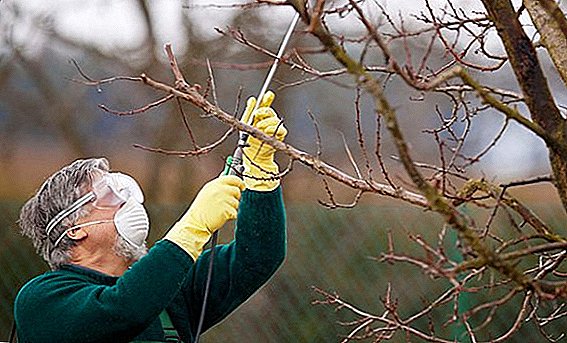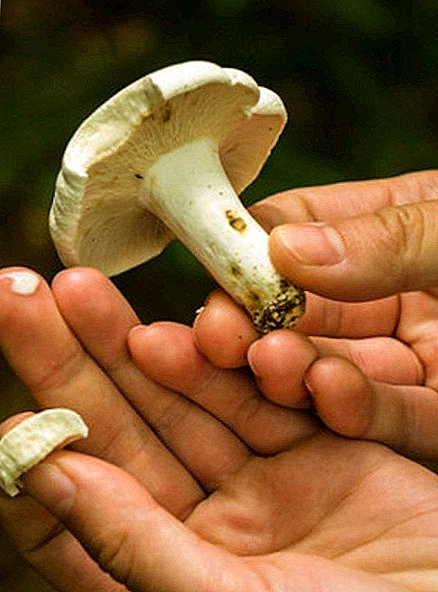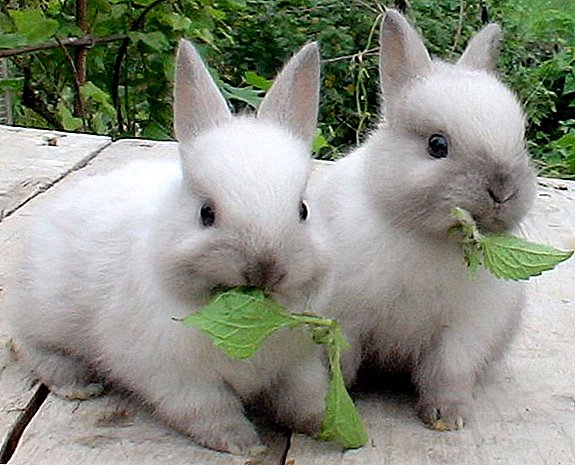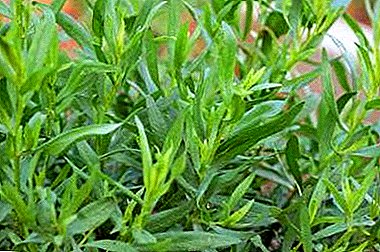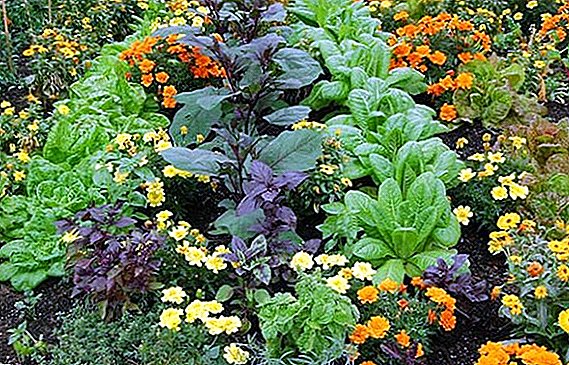 Most often, planting plants at the dacha, we first think of a place to plant, and then we study the rules of care that are intended for it. But sometimes it happens that all conditions are met, and the culture grows poorly or dies at all. Then begin thinking about what this is connected with. The reason for this may be allelopathy, what it is, we propose to understand.
Most often, planting plants at the dacha, we first think of a place to plant, and then we study the rules of care that are intended for it. But sometimes it happens that all conditions are met, and the culture grows poorly or dies at all. Then begin thinking about what this is connected with. The reason for this may be allelopathy, what it is, we propose to understand.
What is it?
Allelopathy in the literal translation from the ancient Greek language means "mutual suffering", and it explains the essence in a succinct and understandable way. In the course of their livelihoods, the influence of plants on each other can be different, including oppressive.
The fact is that every inhabitant of the flora is able, to varying degrees, to release chemicals that are not always liked by its neighbors. This is an integral part of the struggle for the existence of plants in the wild, where they protect themselves and their place in the sun on their own.
To ensure their safety, they secrete chemicals through the root system and leaves, and with the help of precipitation or watering, harmful substances spread to other plantings and cause them harm, and sometimes benefits.
Did you know? The Indians who inhabited America used in practice the various allelopathic properties of plants for weed control.
Sometimes, it is absolutely by chance that such planting combinations are obtained that increase the yield and strengthen the vegetation, but, unfortunately, it happens the other way around. There are four main groups of substances that are responsible for allelopathy, they include:
- antioxidants;
- colins;
- marasmines;
- phytoncides.
If you get acquainted with allelopathy in more detail, find out what it is, and study specific examples, you can always use these unusual properties of plants and thereby make your garden and garden extremely beautiful. 
Important! Weeds are one of the best examples of allelopathy, they can affect crops, which manifest themselves in different ways - from growth retardation to depletion and plant death.
Types
Cultures affect each other in completely different ways, allelopathy can manifest itself in a positive, negative and neutral form. Chemicals that are released can be harmful and beneficial or emit neutrality.
Negative
The worst option for a gardener is when the representatives of the flora on his site are quite aggressive and have a negative effect through the soil on all its inhabitants.  This may be manifested by slower growth, low yields or plant death. Substances can accumulate for quite a long period and manifest themselves for quite a long time.
This may be manifested by slower growth, low yields or plant death. Substances can accumulate for quite a long period and manifest themselves for quite a long time.
Positive
Such cultures are a real find and pride. They are able to favorably influence their neighbors, increasing their yields to the maximum, improve development and rooting, in fact, in every way contribute to the process of life activity.
At the same time, they are able to destroy weeds and repel pests.
Neutral
Plants that maintain neutrality do not pose any danger, but also do not benefit each other. They are neutral to everything happening around them.
Did you know? The term allelopathy is also used in the insurance of vegetable goods that need to be transported. Plant incompatibility is considered a high risk factor.
Is it possible to determine?
It is possible to determine allelopathic activity only through trial and error, that is, if you notice that crops grow poorly near or die, you should try to plant other representatives of this variety and watch.  In cases where the positive dynamics are not monitored, it is worth thinking about the absolute incompatibility and planting of another culture.
In cases where the positive dynamics are not monitored, it is worth thinking about the absolute incompatibility and planting of another culture.
Plant compatibility table
In order to clarify this issue as much as possible, let's look at allelopathy with specific examples of some popular plants using the table.
| Plant | Compatible | Incompatible |
| Fruit trees | ||
| plum | pear, apple tree | |
| cherry | Birch tree | pear, apple, apricot |
| cherry plum | Apple tree | |
| pear | poplar, oak, maple | white acacia, lilac, viburnum, barberry |
| Apple tree | linden, grapes, oak, birch | potato, rose, lilac, viburnum, horse chestnut |
| Deciduous trees | ||
| white acacia | (0) | inhibits the growth of most cultures |
| Linden | apple, oak, maple, spruce, pine | |
| horse chestnut | (0) | inhibits the growth of most cultures |
| oak | apple, maple, linden, pine | white acacia, elm, ash |
| Birch tree | apple, cherry | Pine |
| Vegetable crops | ||
| cabbage | cucumbers, celery, potatoes, onions | beans, tomatoes, strawberries |
| potatoes | watermelon, cabbage, corn, beans, peas, carrots, eggplant, horseradish | pumpkin, tomatoes, cucumbers, sunflower, cherry, apple |
| zucchini | corn, beans, salad, onion | tomatoes |
| tomatoes | onion, carrot, garlic, eggplant, radish | beans, peas, cucumbers |
| cucumbers | peas, corn, beans, radish, cabbage | potatoes |
| Greenery | ||
| parsley | carrots, tomatoes, onions, beans | beets, horseradish |
| dill | turnip, radish, cabbage | |
| fennel | (0) | inhibits the growth of most cultures |
| salad | strawberries, cabbage, cucumbers, onions, radish | pumpkin, tomatoes, beans |
| watercress | radish | |
| Flowers | ||
| the Rose | calendula, garlic | apple tree, pear |
| marigold | strawberries, tulips, roses, gladioli | |
| nasturtium | vegetables, phlox | |
| phlox | nasturtium | |
| jasmine | (0) | inhibits the growth of most cultures |
Important! When planting a particular culture, it is desirable to consider the selected plant from the standpoint of allelopathy. This will ensure good growth and development.
When planting, it is necessary to take into account many factors: the requirements for soil composition and lighting, the specifics of care, the frequency of irrigation and, of course, pay attention to allelopathy.  When you get acquainted with this feature, you can learn to use it to your advantage, thereby saving the plot from weeds and pests, increasing yields and accelerating the growth of crops.
When you get acquainted with this feature, you can learn to use it to your advantage, thereby saving the plot from weeds and pests, increasing yields and accelerating the growth of crops.


